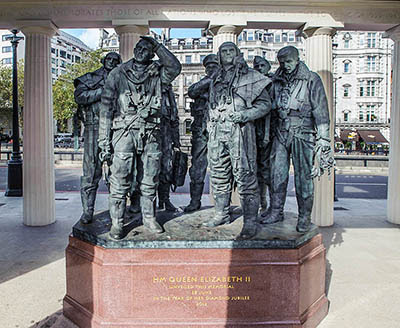February 4, 1945 - Pigeons and the RAF
From the Operations Record Book:
After three successive nights of operations the Squadron was stood down from operations and the day devoted to flying training, ground training and lectures by the Section leaders.
 |
| A Wireless Operator collects his homing pigeons prior to an operation Source: www.wsj.com/articles/operation-columba-review-carriers-of-hope-1541636136 |
Britain’s National Pigeon Service had a squadron of 250,000 birds during WW2, used by the Army, the RAF and Civil Defence Services, including the Police, Fire Service and the Home Guard. Membership in the Service was offered to pigeon fanciers owning a minimum of twenty pigeons, trained and bred as homing pigeons.
National Pigeon Service Groups were formed for the supply of pigeons to the RAF bases and each group was managed by a civilian Pigeon Supply Officer and Deputy Pigeon Supply Officer, responsible for ensuring pigeons from group members were available when needed. These positions were filled on a voluntary basis, with the only reimbursement for the out-of-pocket costs of postage, travel to air stations and other incidentals.
Pigeon lofts were built at RAF bases and the birds began to serve operationally with the RAF in November 1939. Pigeon racing was suspended and birds of prey along the coasts of Britain were culled to include the pigeons’ chances of returning home unhindered. For each service flight, the pigeon owner would receive 4D (about £1 today).
The challenge for the air forces in WW2 was getting messages back to base in the event an aircraft ditched in water or crash-landed, rendering the radio inoperable. The RAF’s Pigeon Service provided the solution... Each reconnaissance or bomber aircraft was provided with a pair of homing pigeons, carried aboard in water-tight containers. In the event of a forced landing, the wireless operator, time-permitting, would write the crew’s location on pieces of paper, place them in small canisters and attach one to the leg of each pigeon. With luck, at least one would make it back to its loft. When the pigeon returned, the message would be urgently sent to the Air Ministry by telegram, enabling a search and rescue operation to begin.
The plan had many successes. In February 1942, an RAF bomber returning from a mission over Norway was hit by German fire and ditched into the North Sea. One of the crew managed to release a pigeon, ‘Winkie’, who flew 120 miles back to her loft. Winkie’s owner immediately alerted the RAF, who managed to locate the crashed aircraft by calculating the bird’s arrival time with the approximate ditching time and the wind direction. A search and rescue operation was launched and all of the men aboard the bomber were saved.
The average speed of a homing pigeon was 50 mph, with a range of about 300 miles, so birds released in on the western edge of Europe - France, Holland, Belgium and those released in the North Sea or the English Channel had a high chance of returning to the east coast of England.
Operation Columba
Pigeons were also widely used throughout the war in order to maintain communications between London and Nazi-occupied Europe. Operation Columba, an intelligence-gathering effort directed by Britain’s elite MI-14 division, ran from April 1941 up to September 1944.
The goal of the operation, was to parachute carrier pigeons in containers behind enemy lines. People sympathetic to the Allies could complete the questionnaires, attach them to the pigeons and release the birds to return to base, carrying with them intelligence about Nazi troop movements and activities in the area.
In 2012, a Surrey, England couple doing home renovations, came upon the remains of a dead bird in their chimney. But it wasn’t just any bird… this one had a small red canister attached to its leg and that canister contained an encoded message going back to World War II. The couple sent the message to Colin Hill, the curator of The Pigeons at War exhibition at Bletchley Park. Neither the museum, nor other code-cracking specialists in the UK could decipher the message.
A team of Canadian researchers at Lakefield Heritage Research (outside Peterborough) claim to have finally cracked the message, believed to have been sent by a unit in Normandy shortly after D-Day (June 6, 1944), to Bomber Command. The deciphered message was determined to have been sent by a paratrooper from the Lancashire Fusiliers who had just landed behind enemy lines. He was sent there to assess the strength of German occupation in that area and was sending the information back to Bomber Command Headquarters at RAF High Wycombe.

Comments
Post a Comment